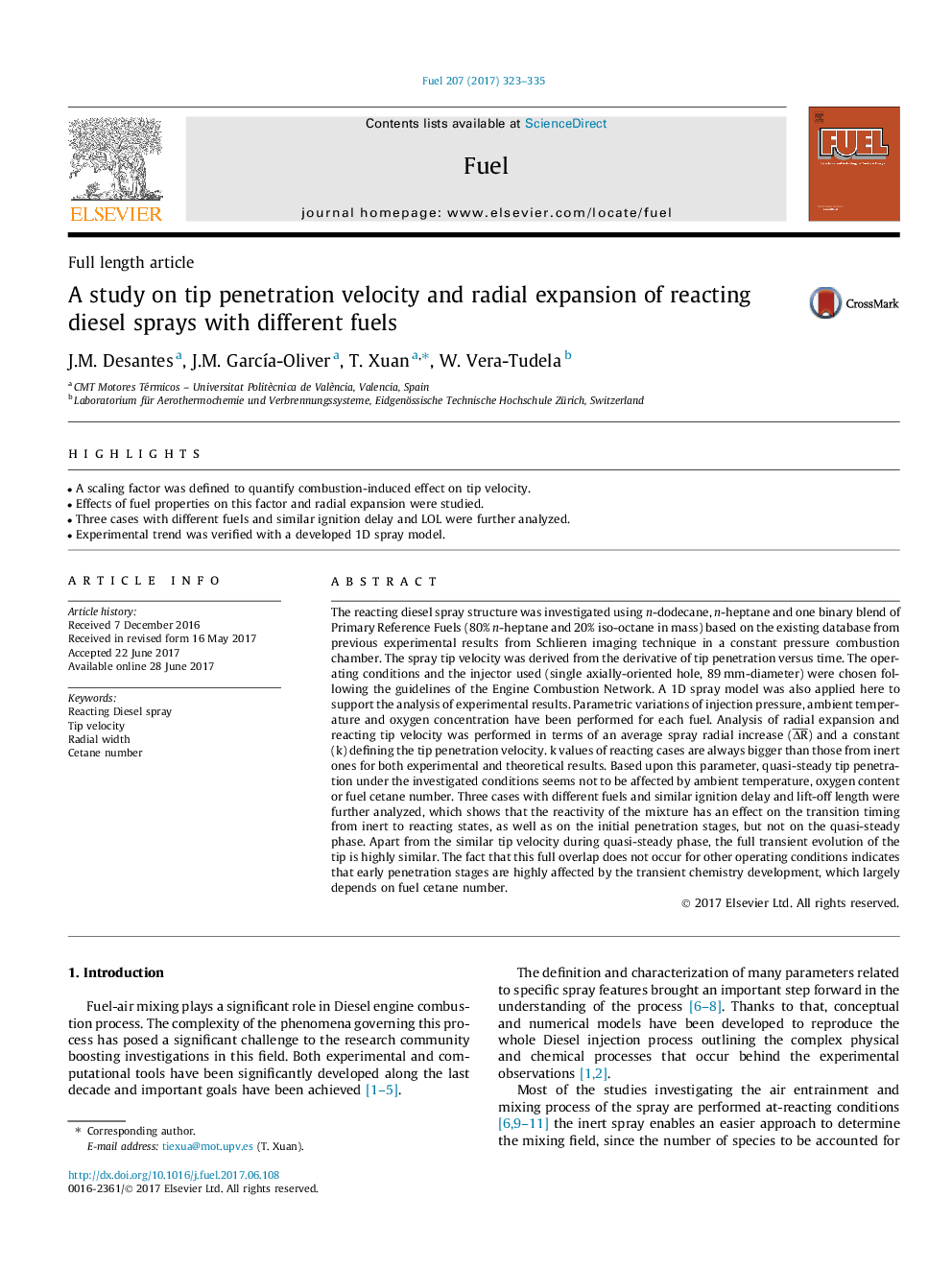| Article ID | Journal | Published Year | Pages | File Type |
|---|---|---|---|---|
| 4768488 | Fuel | 2017 | 13 Pages |
â¢A scaling factor was defined to quantify combustion-induced effect on tip velocity.â¢Effects of fuel properties on this factor and radial expansion were studied.â¢Three cases with different fuels and similar ignition delay and LOL were further analyzed.â¢Experimental trend was verified with a developed 1D spray model.
The reacting diesel spray structure was investigated using n-dodecane, n-heptane and one binary blend of Primary Reference Fuels (80% n-heptane and 20% iso-octane in mass) based on the existing database from previous experimental results from Schlieren imaging technique in a constant pressure combustion chamber. The spray tip velocity was derived from the derivative of tip penetration versus time. The operating conditions and the injector used (single axially-oriented hole, 89Â mm-diameter) were chosen following the guidelines of the Engine Combustion Network. A 1D spray model was also applied here to support the analysis of experimental results. Parametric variations of injection pressure, ambient temperature and oxygen concentration have been performed for each fuel. Analysis of radial expansion and reacting tip velocity was performed in terms of an average spray radial increase (ÎRâ¾) and a constant (k) defining the tip penetration velocity. k values of reacting cases are always bigger than those from inert ones for both experimental and theoretical results. Based upon this parameter, quasi-steady tip penetration under the investigated conditions seems not to be affected by ambient temperature, oxygen content or fuel cetane number. Three cases with different fuels and similar ignition delay and lift-off length were further analyzed, which shows that the reactivity of the mixture has an effect on the transition timing from inert to reacting states, as well as on the initial penetration stages, but not on the quasi-steady phase. Apart from the similar tip velocity during quasi-steady phase, the full transient evolution of the tip is highly similar. The fact that this full overlap does not occur for other operating conditions indicates that early penetration stages are highly affected by the transient chemistry development, which largely depends on fuel cetane number.
